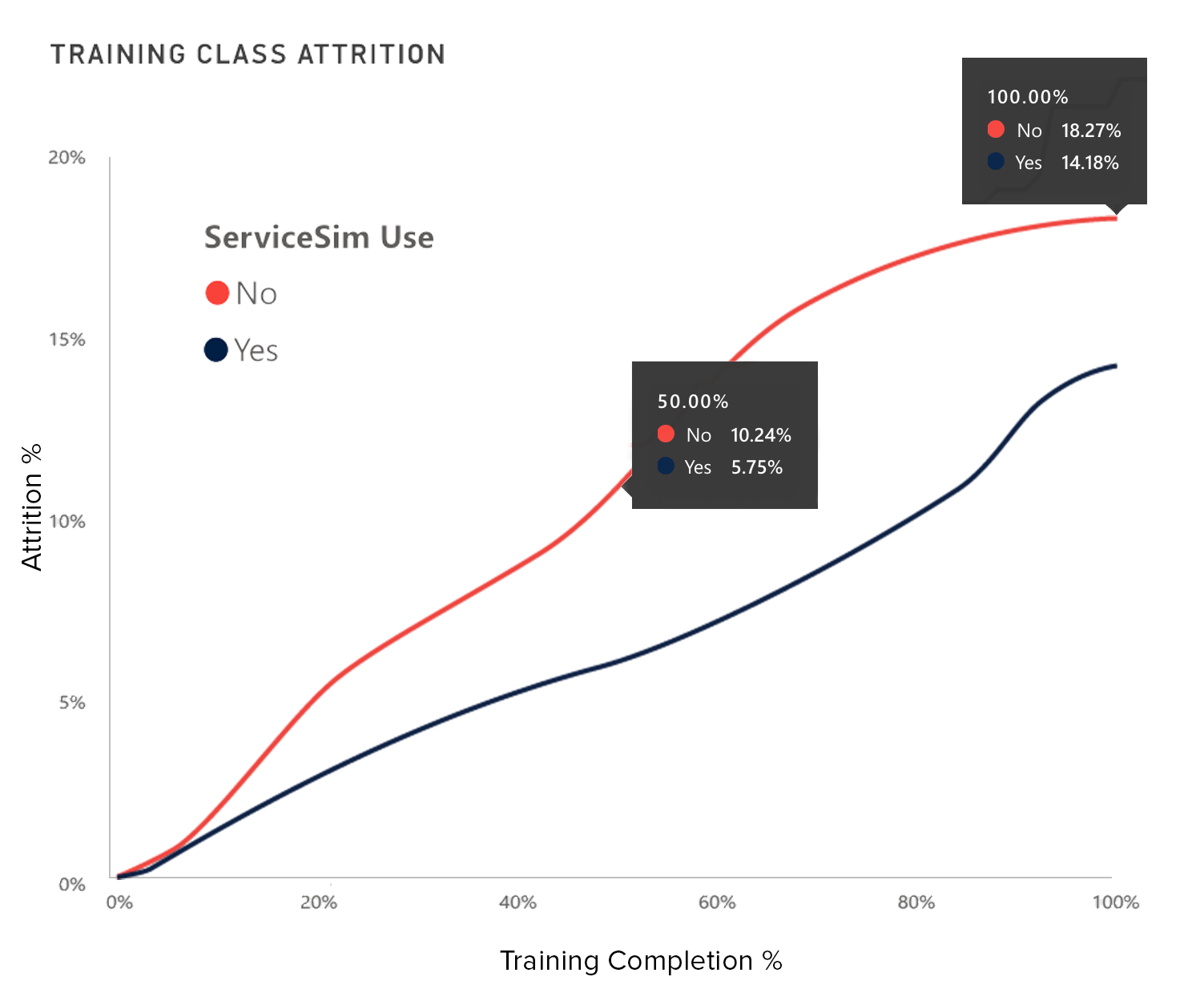Understanding what matters to agents is important, now more than ever. If agents aren’t satisfied with their work or connected to their contact center’s culture, they can find opportunities that better suit their needs elsewhere.
Wouldn’t it be great if there was a way to measure agent satisfaction so contact center leaders could prevent turnover and improve agent performance?
We agree. That’s why we’re developing the ASAT metric.
First off, what is the ASAT metric?
Put simply, the agent satisfaction score will measure satisfaction based on how well agents’ needs are met across six dimensions:
- Training: How does the agent’s training prepare them for calls?
- Technology: How does the agent’s software assist them on calls?
- Team: How does the team support the agent?
- Culture: How does the contact center’s culture support the agent?
- Well-being: How are the agent’s wellness needs being met?
- Product/Service: How does the agent feel the company’s products or services serve the customer?
Examining these six factors creates a holistic picture for contact center leaders to understand what agents need to succeed.
With the ASAT metric, leaders will get actionable information on how to structure training, what tools to purchase, and how to cultivate a work culture that best helps agents do their job.
For more information on the ASAT metric and its six dimensions, watch the latest episode of CX QA Live! with Rob Connelly from Vistio and Jeremy Watkin from NumberBarn.
The ASAT metric was born out of prevalent issues in the CX industry.
Existing CX Metrics Don’t Consider AX
The CSAT metric is incredibly important because it allows contact centers to evaluate and improve customer satisfaction. So, it’s not a surprise that contact centers prioritize this metric.
But this means you often have information on every aspect of the business except the agent’s perspective. And that’s a costly mistake, especially when it comes to software.
The C-Suite typically decides which tools the agents will use without understanding what agents actually need. When leaders buy software without data to support their purchase, the likelihood of that technology improving performance is low.
Vistio is developing the ASAT metric to combat this lack of information by providing leaders with the knowledge to make the right choices concerning training, tools, and technology.
Agents Lack Control Over Feedback
Contact centers often conduct surveys to gauge where leaders are succeeding and agents need improvement. Whether intentional or not, survey questions typically reflect a bias and steer agents toward responding positively rather than honestly, which impacts the value of the responses and reduces agent participation.
Agents can feel frustrated or demoralized when they don’t have the opportunity to express sincere feedback to contact center leaders.
Unlike most agent surveys, the ASAT metric will protect agent integrity and provide accurate information to contact center leaders.
“Since Vistio will host the ASAT metric, agents will control the data. Agents can be confident in offering complete honesty on surveys and other measurements. That’s why this metric is particularly useful for companies who want to maximize the value of their agents as a feedback source.”
—Rob Connelly, Head of Sales at Vistio
Benefits of implementing the ASAT metric.
Reduce Agent Turnover
The primary goal of the ASAT metric is to give CX leaders a way to combat agent turnover. If contact centers do not provide agents with transparency, positivity, and efficiency, or the proper training and tools, agents will likely become disconnected and disgruntled.
The ASAT metric will empower leaders to know what improvements agents want to see, whether it’s about needing simpler software, clearer communication, or a more energizing environment.
Once leaders have this knowledge, they can give agents exactly what they want to stop agent dissatisfaction and turnover.
Boost Contact Center Performance
Utilizing the ASAT metric will lead to direct results for business outcomes. If contact centers make necessary changes based on the metric’s data, leaders will see improvements in CSAT and AHT and reductions in turnover and training costs.
And when agent performance and retention rise, it means a contact center is succeeding.
The ASAT metric will build a straightforward path to success.
The ASAT metric enables contact center leaders to understand agents’ perspectives and develop actionable plans based on agent feedback.
With this metric, leaders will feel confident while making difficult decisions, knowing they have data to support them.
Contact Vistio to learn more about the ASAT metric. Or contribute to the development of the metric here.

